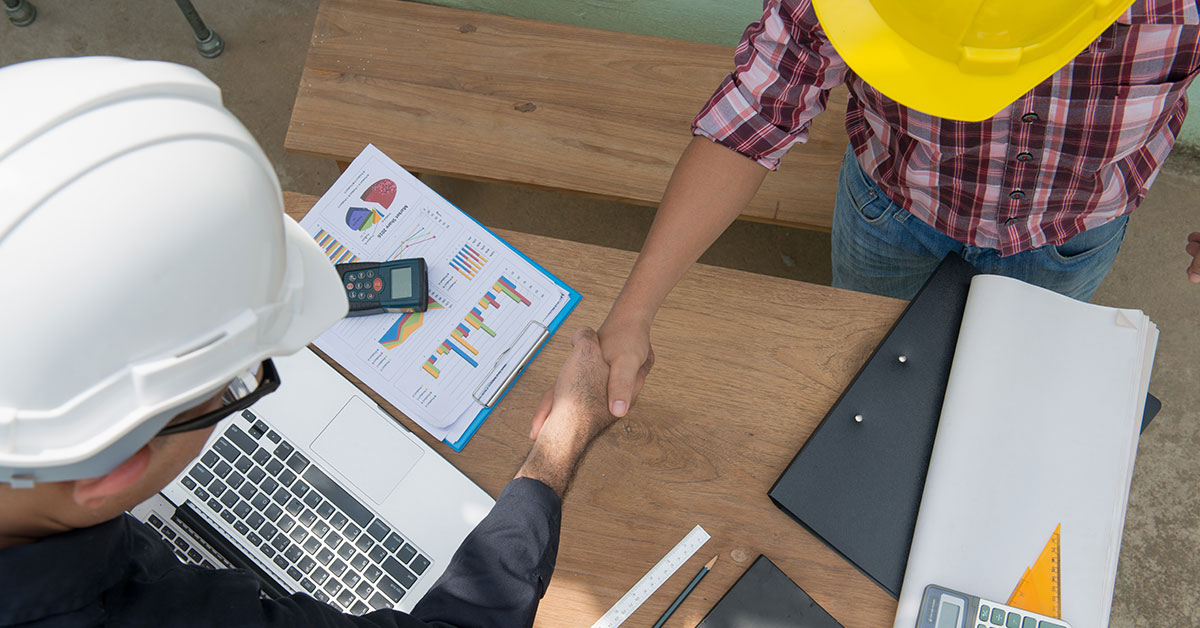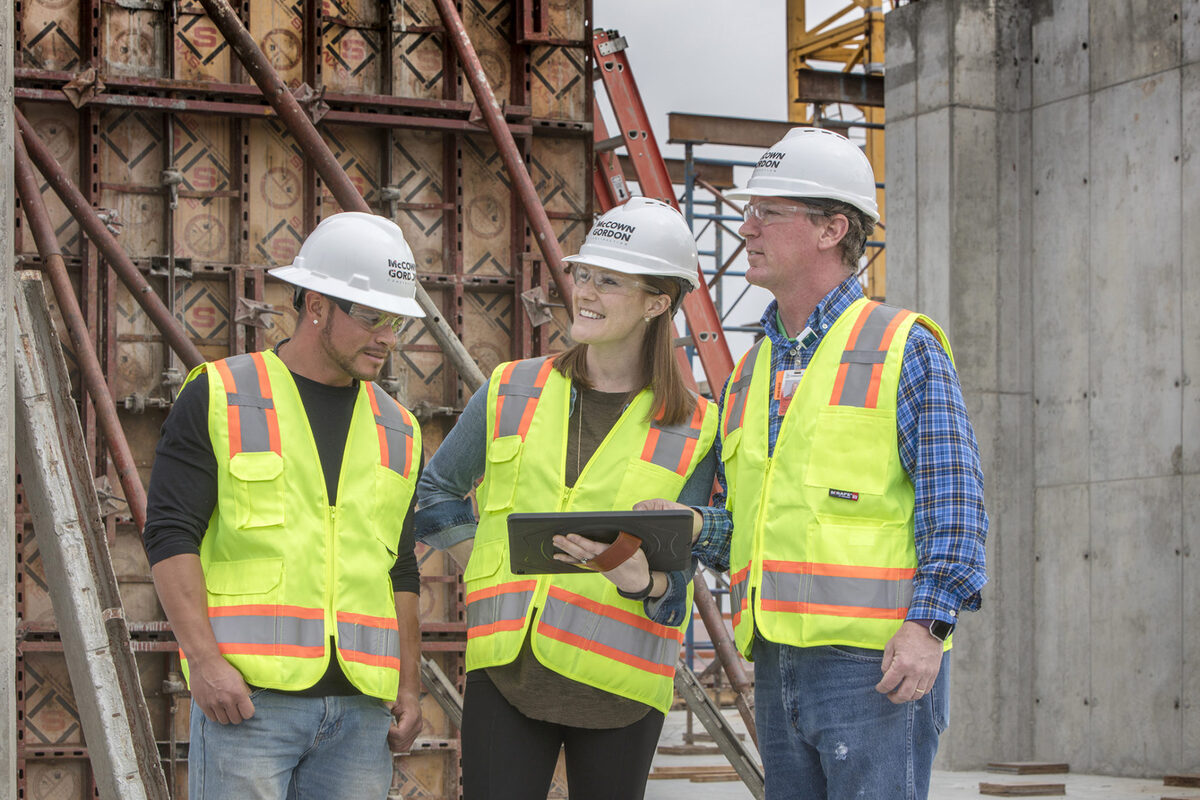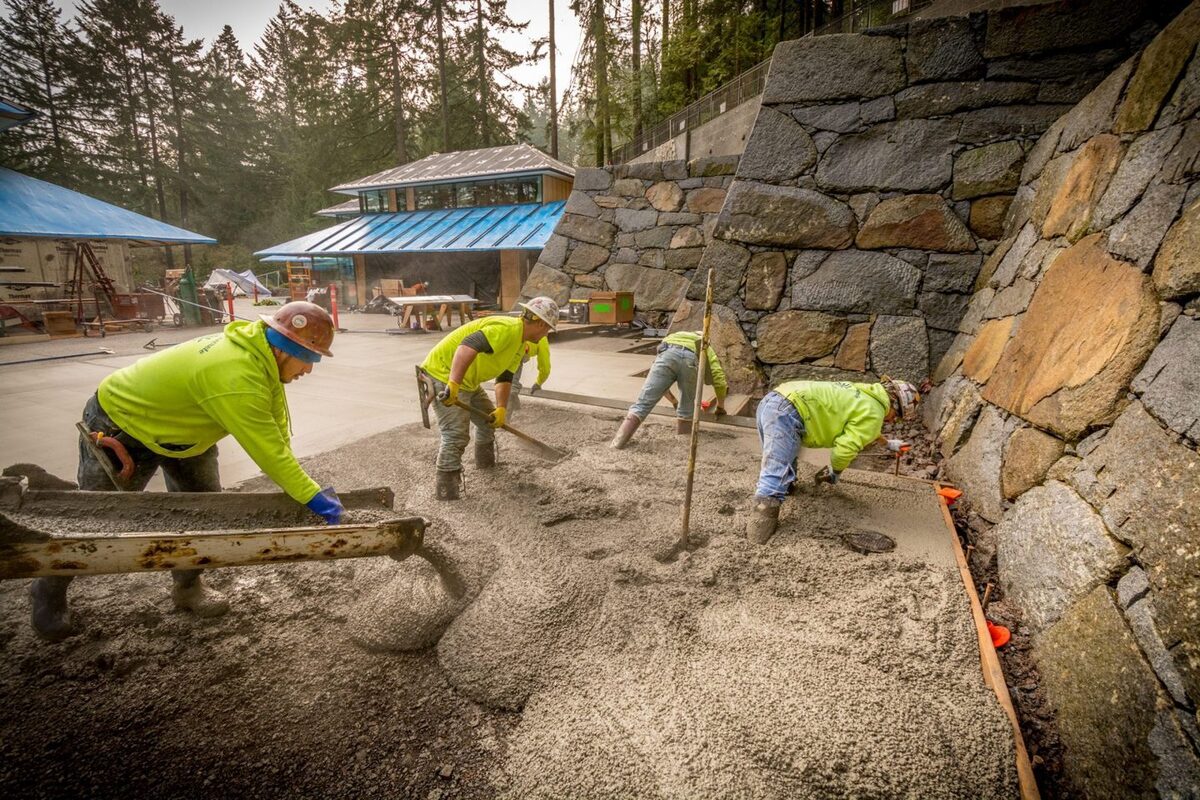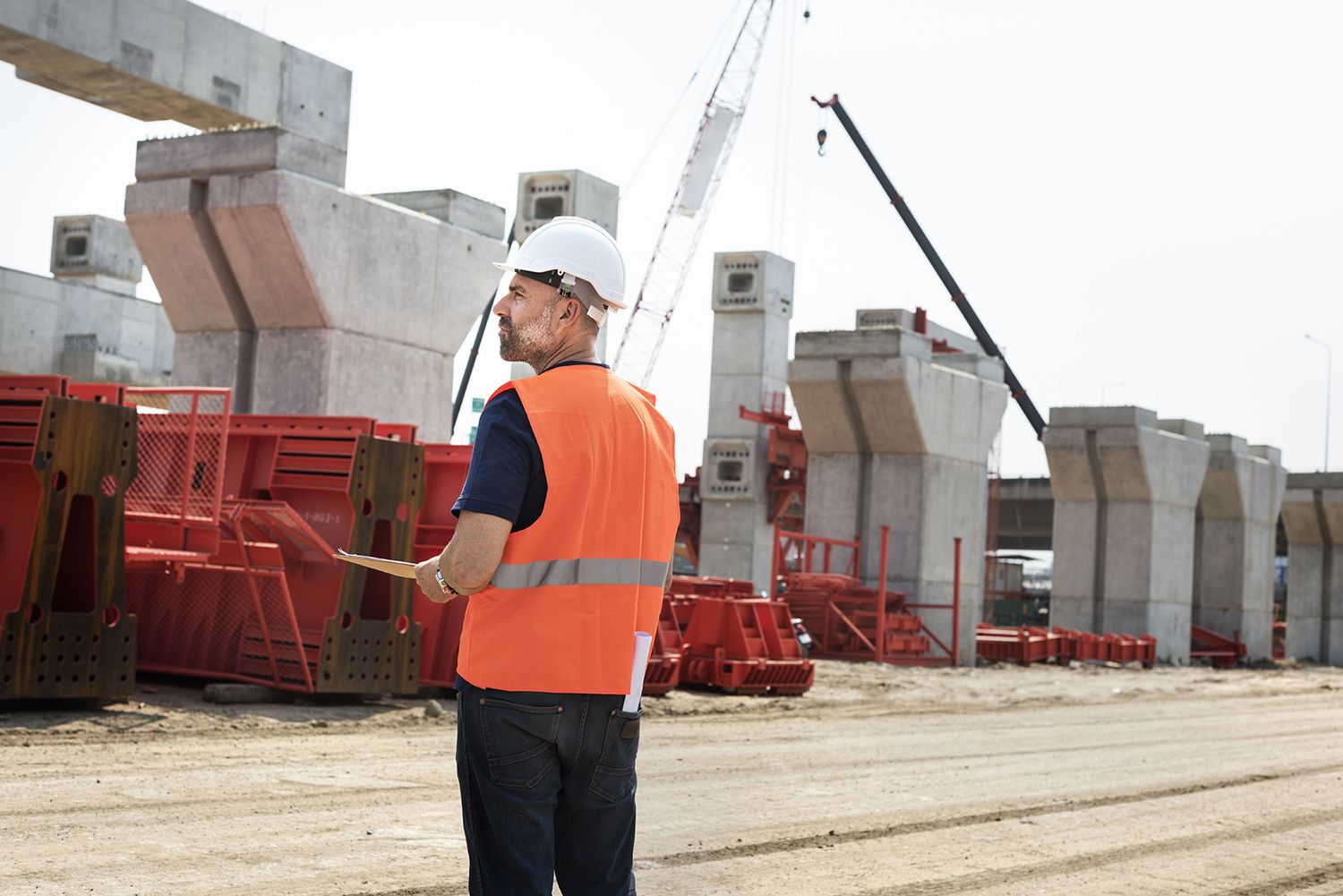Home>diy>Building & Construction>How To Bid For Construction Jobs


Building & Construction
How To Bid For Construction Jobs
Modified: January 5, 2024
Learn how to bid for construction jobs and increase your chances of winning with our expert tips and strategies. Don't miss out on valuable opportunities in the building construction industry.
(Many of the links in this article redirect to a specific reviewed product. Your purchase of these products through affiliate links helps to generate commission for Storables.com, at no extra cost. Learn more)
Introduction
Welcome to the exciting world of construction bidding! Securing construction jobs requires a winning combination of knowledge, expertise, and strategic planning. In this article, we will guide you through the process of bidding for construction jobs, equipping you with the essential skills and insights necessary to succeed in this competitive industry.
Construction bidding is the process by which contractors and construction companies compete for projects by submitting proposals that outline their qualifications, experience, and cost estimates. It is a crucial step in the construction industry, as winning bids are essential for business growth and profitability.
While the bidding process may seem daunting at first, understanding the key principles and best practices is essential. By following the steps outlined in this guide, you will be well-equipped to navigate the bidding process successfully.
Throughout this article, we will explore the various stages of the bid process, from preparing your bid to evaluating the results. We will delve into important aspects such as understanding the scope of work, estimating the costs, creating competitive proposals, researching clients, and successfully submitting your bid.
It is worth noting that the bidding process varies depending on the scale and complexity of the project. Large-scale commercial projects may have a lengthier and more formal bidding process, while residential construction projects may be more straightforward. However, the fundamental principles behind bidding remain the same.
Are you ready to dive into the world of construction bidding? Let’s get started!
Key Takeaways:
- Understanding the bid process, preparing a competitive proposal, and thorough client research are crucial for success in construction bidding. Attention to detail, professionalism, and client-centric approaches are key to winning projects.
- Accurate cost estimation, strategic follow-up, and reflective evaluation of bid results are essential for continuous improvement and success in the competitive construction bidding industry. Adaptation and learning from feedback are key to future success.
Read more: How To Bid A Siding Job
Understanding the Bid Process
The bid process is a systematic and structured approach that enables construction companies to compete for projects and secure contracts. It involves several stages and requires a thorough understanding of the project requirements, as well as effective communication and negotiation skills. Let’s break down the bid process into its key components:
- Project Identification: The first step in the bid process is identifying potential construction projects. This can be done by searching online platforms, attending industry events, networking, or partnering with developers and architects. The goal is to find projects that align with your expertise and business goals.
- Prequalification: Once you’ve identified a project of interest, it is essential to determine if you are qualified to bid on it. Many projects have specific requirements, such as experience, financial stability, bonding capacity, and licensing. Prequalification involves submitting necessary documents and information to demonstrate your capability to undertake the project.
- Request for Proposal (RFP): After prequalification, the project owner or developer will issue a Request for Proposal (RFP), inviting qualified contractors to submit their bids. The RFP contains detailed information about the project scope, specifications, timelines, and evaluation criteria.
- Bid Preparation: Once you have reviewed the RFP thoroughly, it’s time to prepare your bid. This includes estimating project costs, determining labor and material requirements, and developing a timeline for project completion. Accurate cost estimation is crucial for a competitive bid and ensuring profitability.
- Subcontractor Selection: In construction projects, subcontractors play a crucial role. If your bid is successful, you will need to select subcontractors to handle specific aspects of the project. This involves evaluating subcontractor proposals, checking their qualifications, and negotiating contracts.
- Bid Submission: The next step is submitting your bid to the project owner or developer by the specified deadline. Bids are typically submitted in a sealed envelope and must include all required documents and information as outlined in the RFP. It is important to double-check your bid to ensure accuracy and completeness.
- Bid Evaluation: Once all bids are received, the project owner or developer will evaluate them based on predetermined criteria. This may include factors such as price, experience, qualifications, references, and proposed project timelines. The evaluation process can take some time, as the project owner carefully reviews and compares each bid.
- Contract Negotiation: If your bid is selected as the winning bid, you will enter into contract negotiations with the project owner or developer. This involves finalizing the terms, conditions, and payment schedule. It is crucial to carefully review the contract to ensure that all aspects of the project are adequately addressed.
- Contract Award: After both parties have agreed upon the terms, the contract is awarded to the winning bidder. At this stage, you can commence the project, mobilize your team, and start working towards successful project completion.
Understanding the bid process is essential for navigating the competitive construction industry. By following these steps and best practices, you will be well-prepared to create competitive bids that increase your chances of winning construction projects.
Preparing Your Bid
Preparing a well-crafted bid is essential to stand out from your competitors and increase your chances of winning construction projects. It requires careful planning, thorough research, and attention to detail. Let’s explore the key steps involved in preparing your bid:
1. Review the RFP: Start by carefully reviewing the Request for Proposal (RFP). Understand the project scope, specifications, timelines, and evaluation criteria. Identify any specific requirements or qualifications that need to be addressed in your bid.
2. Understand the Client: Take the time to research and understand the project owner or developer. Gain insights into their values, expectations, and previous projects. This knowledge will help you tailor your bid to their needs and showcase your understanding of their goals.
3. Estimate the Costs: Accurately estimating project costs is vital for a competitive bid. Break down the project into individual components, such as labor, materials, equipment, and subcontractors. Consider any potential risks or contingencies that may impact costs. Consult with your team or industry experts to ensure your estimates are realistic.
4. Develop a Project Timeline: Outline a detailed project timeline that showcases your ability to complete the project within the specified timeframe. Consider factors such as procurement, permits, and subcontractor availability. Ensure your timeline aligns with the client’s desired project completion date.
5. Showcase Your Qualifications: Highlight your company’s qualifications, experience, and expertise in similar projects. Provide details of your past successes, certifications, and any unique value propositions that differentiate you from your competitors. Use case studies, testimonials, and reference letters to demonstrate your capabilities.
6. Subcontractor Selection: If subcontractors are required for the project, carefully evaluate and select reliable subcontractors who align with the project’s requirements. Clearly define their roles, responsibilities, and scope of work. Include subcontractor qualifications, references, and proposed cost breakdowns in your bid.
7. Pricing Strategy: Determine your pricing strategy, keeping in mind your target profit margin, competitive market rates, and overall project budget. Be mindful of any cost-saving measures or value-added services you can offer to make your bid more attractive.
8. Attention to Detail: Pay close attention to all bid requirements and instructions. Ensure that all necessary documents, forms, and certifications are included and properly completed. A well-organized and error-free bid package will create a positive impression and reflect your professionalism.
9. Double-Check Your Bid: Before submitting your bid, thoroughly review it to ensure accuracy and completeness. Double-check all calculations, cost estimates, and project timelines. Consider having a peer or colleague review your bid for a fresh perspective and to catch any potential errors or omissions.
10. Present Your Bid Professionally: Package your bid in a professional and organized manner. Include a cover letter that summarizes your understanding of the project and highlights the key strengths of your bid. Use engaging visuals, such as charts or diagrams, to enhance the presentation of your proposal.
By following these steps, you can prepare a comprehensive and competitive bid that showcases your qualifications and increases your chances of securing the construction project. Remember, attention to detail, thorough research, and a clear understanding of the client’s needs are key to effectively prepare your bid.
Understanding the Scope of Work
Understanding the scope of work is a crucial step in the bid process. The scope of work outlines the specific tasks, deliverables, and objectives of the construction project. It provides a clear understanding of what is expected, allowing you to accurately estimate the costs and resources needed to complete the project successfully. Here are the key aspects to consider when understanding the scope of work:
1. Project Objectives: Start by identifying the project’s objectives. Is it a residential, commercial, or industrial project? What is the intended purpose of the final structure? Understanding the objectives will give you insights into the project’s unique requirements and help you tailor your bid accordingly.
2. Detailed Plans and Specifications: Review the architectural plans and specifications provided in the RFP. Pay close attention to details such as dimensions, materials, finishes, and any special requirements. Understand how the different components of the project fit together and how they contribute to the overall scope of work.
3. Special Considerations: Take note of any special considerations or unique challenges associated with the project. These may include specific environmental regulations, site constraints, permits, or other factors that will impact the scope of work. Ensure that your bid accounts for these considerations and includes appropriate strategies to address them.
4. Work Breakdown Structure (WBS): Create a work breakdown structure to organize the project into manageable tasks and activities. Break down the scope of work into logical components, such as site preparation, foundation work, electrical installations, plumbing, and finishing. This will help estimate costs, assign resources, and create a timeline for each task.
5. Identify Deliverables: Clearly identify the specific deliverables that need to be provided as part of the project. This may include architectural and engineering drawings, permits, site inspections, final reports, and handover documentation. Ensure that your bid accounts for these deliverables and includes a plan to meet them within the project timeline.
6. Subcontractor Involvement: Assess whether subcontractors will be required for certain aspects of the project. Identify the scope of work that will be delegated to subcontractors and ensure that it aligns with your bid. Clearly define the responsibilities and deliverables expected from subcontractors in order to create a comprehensive and accurate estimate.
7. Potential Changes and Variations: Anticipate potential changes or variations to the scope of work that may arise during the construction process. Consider factors such as design changes, unforeseen site conditions, or client-requested modifications. Clearly communicate your approach to handling changes and how they will be addressed financially and within the project timeline.
8. Risk Assessment: Assess the risks associated with the scope of work. Identify potential challenges, such as adverse weather conditions, supply chain disruptions, or labor shortages, that may impact the project’s successful completion. Develop strategies to mitigate these risks and account for them in your bid.
9. Communication and Collaboration: Establish effective communication channels and collaboration processes with the project owner, architects, engineers, and other stakeholders. Regularly communicate updates, progress, and potential scope changes to ensure transparency and avoid misunderstandings.
10. Clarify any Ambiguities: If any aspects of the scope of work are unclear or ambiguous, seek clarification from the project owner or developer before submitting your bid. Clear communication and understanding of the scope are essential for accurate cost estimation and successful project delivery.
By thoroughly understanding the scope of work, you can ensure that your bid accurately reflects the project’s requirements and increases your chances of winning the construction project. Remember to pay attention to details, communicate effectively, and align your bid with the project’s objectives.
Estimating the Costs
Accurately estimating project costs is essential for creating a competitive bid and ensuring profitability in construction projects. Estimating costs involves analyzing various factors, including labor, materials, equipment, subcontractors, and overhead expenses. Consider the following key steps when estimating the costs for a construction project:
1. Review the Scope of Work: Thoroughly review the scope of work to understand the specific tasks and deliverables required for the project. Break down the project into individual components, such as site preparation, foundation work, structural elements, MEP (mechanical, electrical, plumbing) installations, and finishing.
2. Quantify Materials: Identify the materials required for each component of the project. Research suppliers and obtain quotes to determine the cost of materials. Consider factors such as quality, availability, delivery times, and any specific requirements outlined in the RFP.
3. Analyze Labor Requirements: Assess the labor requirements for each phase of the project. Determine the number of skilled tradespeople, laborers, and supervisors needed. Consider factors such as the complexity of the work, project timeline, and any specialized skills required. Use industry-standard labor rates and productivity norms to calculate labor costs.
4. Account for Equipment: Identify the specific equipment and machinery needed for the project. Determine whether you will use in-house equipment or need to rent or lease specialized equipment. Include equipment costs, maintenance, and operating expenses in your cost estimate.
5. Evaluate Subcontractor Costs: If certain tasks or specialties are subcontracted, obtain quotes from subcontractors for their specific scope of work. Compare different subcontractor bids and consider their qualifications, certifications, and reputation. Include the subcontractor costs in your overall cost estimate.
6. Consider Indirect Costs: Indirect costs, such as project management, administrative expenses, insurance, permits, and site office setup, should be accounted for in your cost estimate. Allocate a portion of the project budget to cover these indirect costs.
7. Allow for Contingencies: Include a contingency allowance in your cost estimate to account for unforeseen expenses or changes that may arise during the course of the project. The contingency amount should be based on the complexity and risk associated with the project.
8. Consider Market Conditions: Evaluate current market conditions, such as price fluctuations in materials, labor costs, and equipment rentals. Stay updated on industry trends and economic factors that may impact pricing. Adjust your cost estimates accordingly to ensure competitiveness.
9. Review Historical Data: Draw insights from historical project data and cost information from previous similar projects. Analyze the costs and outcomes of past projects to inform your estimations and identify potential areas of improvement.
10. Validate and Refine: Before finalizing your cost estimate, validate it by reviewing with industry experts, consulting with your team, or using cost estimation software. Take any feedback or new information into account and refine your cost estimate as necessary.
It’s important to note that cost estimation is not a one-time task. Regularly review and update your cost estimates as new information becomes available, ensuring that your bid remains accurate throughout the bidding process.
Accurate cost estimation is vital for creating a competitive and profitable bid. By following these steps and considering all relevant factors, you can confidently estimate the costs of a construction project, giving you a solid foundation for a successful bid.
When bidding for construction jobs, make sure to thoroughly review the project specifications and requirements to provide an accurate and competitive bid.
Read more: How To Bid On Landscaping Jobs
Creating a Competitive Proposal
Creating a competitive proposal is a critical step in securing construction jobs. A well-crafted proposal showcases your company’s strengths, expertise, and unique value proposition, setting you apart from competitors. To create a compelling proposal, consider the following key elements:
1. Cover Letter: Begin your proposal with a strong cover letter that introduces your company and summarizes your understanding of the project. Personalize the letter to address the specific needs and goals of the client. Highlight your experience and qualifications that make you the ideal choice for the project.
2. Executive Summary: Provide an executive summary that encapsulates the key points of your proposal. Summarize the scope of work, deliverables, timeline, and the value your company brings to the project. Keep it concise, engaging, and focused on the client’s objectives.
3. Company Profile: Include a section that provides an overview of your company, highlighting your experience, track record, and core competencies. Emphasize past projects similar to the one being bid on, demonstrating your capabilities in delivering successful outcomes.
4. Project Approach: Detail your approach to the project, outlining the specific steps you will take to achieve the project objectives. Showcase your team’s technical expertise, commitment to quality, and dedication to safety. Explain how your approach aligns with the client’s vision.
5. Value Proposition: Clearly articulate your unique value proposition and how it benefits the client. Identify the key differentiators that set you apart from competitors, such as innovative solutions, cost savings measures, or a commitment to sustainability. Highlight how these factors will add value to the project.
6. Project Timeline: Present a detailed project timeline that outlines the key milestones and deliverables. Show your ability to adhere to strict timelines and manage resources effectively. Include any critical dependencies or potential risks that might impact the timeline, along with your mitigation strategies.
7. Cost Breakdown: Provide a comprehensive cost breakdown, clearly outlining how funds will be allocated across the different project components. Ensure transparency and accuracy in your cost estimates, substantiating them with supporting documentation or references. Highlight any cost-saving measures or value engineering options you have identified.
8. Team Qualifications: Showcase the qualifications and experience of your project team members. Highlight key individuals who will play a significant role in the project, emphasizing their expertise and relevant qualifications. This demonstrates credibility and reassures the client of your ability to deliver.
9. References and Testimonials: Include references from previous clients or testimonials that attest to your company’s reliability, quality of work, and professionalism. This adds credibility and reassurance to your proposal, giving the client confidence in your capabilities.
10. Visual Aids: Utilize visual aids, such as photographs, diagrams, or renderings, to enhance the presentation of your proposal. Visuals can help the client better understand your ideas, visualize the end result, and reinforce your expertise and attention to detail.
Remember to tailor your proposal to the specific project and client. Pay attention to formatting, grammar, and overall presentation to ensure a professional and polished document. A well-crafted, competitive proposal will position you as a preferred choice for the construction job, increasing your likelihood of success.
Researching the Client
Researching the client is a crucial step in the bid process as it allows you to gain valuable insights and tailor your proposal to their specific needs and expectations. By understanding the client’s background, preferences, and project goals, you can create a proposal that resonates with them and increases your chances of winning the construction job. Here are the key elements to consider when researching the client:
1. Company Background: Start by researching the client’s company background. Understand their history, values, mission statement, and overall business goals. This will help you align your proposal with their vision and establish a connection based on shared values.
2. Previous Projects: Explore the client’s previous projects to gain insights into their portfolio and areas of expertise. Review the types of projects they have undertaken, their scale, and any specific challenges they have faced. This information will help you understand their expectations and requirements for the current project.
3. Project Objectives: Identify the client’s project objectives, including the desired outcomes, functionality, and aesthetics. Understand what they hope to achieve with the construction project, whether it’s improving efficiency, enhancing their brand image, or expanding their operations. Tailor your proposal to demonstrate how your approach will help them achieve these objectives.
4. Leadership and Decision-Makers: Identify the key decision-makers and project stakeholders within the client’s organization. Research their backgrounds, roles, and preferences. Understand their priorities and communication style to better tailor your proposal to their specific needs and preferences.
5. Industry Trends: Stay informed about the latest industry trends and advancements relevant to the client’s business sector. Be aware of emerging technologies, sustainability practices, or regulatory changes that may impact the project. This knowledge will enable you to incorporate innovative solutions and demonstrate your expertise in the field.
6. Reputation and Reviews: Evaluate the client’s reputation within the industry. Look for online reviews, testimonials, or case studies from their previous projects. This will provide insights into their working style, expectations, and satisfaction levels with previous contractors. Tailor your proposal to address any concerns or pain points mentioned in these reviews.
7. Project Budget and Constraints: Research the client’s project budget and any constraints or limitations they may have. Understand their financial expectations and any specific cost-saving measures they may be looking for. Tailor your proposal to demonstrate how you can meet their budget requirements while delivering value and quality.
8. Preferred Communication Style: Take note of the client’s preferred communication style and channels. Some clients may prefer regular meetings and updates, while others may prefer written reports or virtual communication. Align your communication approach with their preferences to foster a productive and collaborative working relationship.
9. Competitive Landscape: Research the client’s main competitors to gain a deeper understanding of their industry dynamics and challenges. This will help you identify how your proposal can provide a competitive advantage and address the client’s unique needs in comparison to other industry players.
10. Network Connections: Leverage your network connections to gather additional insights about the client. Reach out to industry professionals or colleagues who may have worked with the client in the past. Their firsthand experiences can provide valuable information and help you tailor your proposal more effectively.
By conducting thorough research on the client, you can demonstrate a deep understanding of their needs, establish a connection based on shared values, and tailor your proposal to their specific objectives. This client-centric approach increases your chances of creating a compelling and winning bid in the construction industry.
Submitting Your Bid
Submitting your bid is the culmination of all the hard work and preparation you have put into the bidding process. It’s a critical step that requires attention to detail, professionalism, and proper documentation. Here are the key elements to consider when submitting your bid:
1. Review Submission Requirements: Before finalizing your bid, carefully review the submission requirements outlined in the Request for Proposal (RFP). Ensure that you have addressed all the necessary documents, forms, and attachments specified. Failure to comply with these requirements may result in disqualification.
2. Complete the Bid Form: Fill out the bid form accurately and completely. Ensure that all required fields are filled in, and provide any additional information or clarifications as requested. Attention to detail is crucial, as simple omissions or errors in the bid form can lead to rejection.
3. Include Supporting Documents: Include all necessary supporting documents as specified in the RFP. This may include your company’s certifications, licenses, insurance, references, and any other relevant documentation. Organize the documents in a logical and easily accessible manner to facilitate the evaluation process.
4. Double-Check Your Numbers: Review your cost estimates, calculations, and pricing to ensure accuracy. Double-check for any potential errors or inconsistencies. Validate your financial figures and ensure that they match the bid form and any supporting documentation provided.
5. Seal and Secure Your Bid: Place your bid documents in a sealed envelope or package, and clearly mark it with the project name, bid number, and your company’s details. Ensure that the package is securely sealed to prevent tampering or unauthorized access to your bid.
6. Submit Within the Deadline: Adhere to the specified deadline for bid submission. Plan ahead to avoid any last-minute rush or unforeseen complications. It’s recommended to submit your bid well in advance of the deadline to account for any potential delays in delivery or unforeseen circumstances.
7. Record Delivery Confirmation: Obtain proof of bid delivery by using registered or certified mail, courier services with tracking capabilities, or hand-delivery with a signed receipt. Keep a record of this delivery confirmation as evidence to address any disputes that may arise regarding timely submission.
8. Maintain Professionalism: Maintain professionalism and integrity throughout the bidding process. Avoid any unethical practices, such as collusion or improper communication with individuals involved in the evaluation process. Adhere to the guidelines and ethical standards set forth by the industry and the client.
9. Confidentiality and Non-Disclosure: Respect the confidentiality and non-disclosure agreements, if any, outlined in the RFP. Safeguard any sensitive information provided by the client and refrain from sharing it with third parties without proper authorization.
10. Follow-Up Communication: After submitting your bid, it’s essential to follow up with the client to confirm receipt and express your appreciation for the opportunity. Maintain open lines of communication and be responsive to any follow-up inquiries or requests for additional information.
Submitting your bid is a crucial step towards securing the construction project. By thoroughly reviewing the requirements, ensuring accuracy, and maintaining professionalism, you increase your chances of making a positive impression and winning the bid.
Following Up on Your Bid
Following up on your bid is an important step to demonstrate your continued interest and engagement in the construction project. While the decision-making process may take time, proactive follow-up can help you stay on the client’s radar and potentially address any concerns or questions they may have. Here are some key steps to take when following up on your bid:
1. Acknowledge Receipt: Shortly after submitting your bid, send a thank-you email or letter to the project owner or decision-maker. Express your gratitude for the opportunity to bid on the project and acknowledge the receipt of your bid. This simple act shows professionalism and keeps communication channels open.
2. Request a Timeline: If the client did not specify a timeline for the decision-making process in the Request for Proposal (RFP), politely request an estimated timeline for their evaluation and selection process. Understanding the timeline can help you plan your follow-up communication accordingly.
3. Respect the Decision-Making Process: Allow the client the necessary time to evaluate all bids and make their decision. Avoid excessive follow-up calls or emails that may come across as overly pushy or desperate. Patience is key, as the client may have a rigorous evaluation process to ensure a fair and thorough selection.
4. Offer Additional Information: If the client requests additional information or clarification during the evaluation process, promptly respond with the requested details. Provide any supporting documentation or references that may help strengthen your bid. This demonstrates your commitment to transparency and your willingness to address any concerns.
5. Maintain Regular Communication: Maintain periodic, professional communication with the client throughout the evaluation process. This can include occasional check-ins to inquire about the progress or to reiterate your interest in the project. Be mindful not to be intrusive or overly persistent.
6. Showcase Updates or Relevant Achievements: If you have achieved any significant milestones or acquired new qualifications or certifications since submitting your bid, consider providing updates to the client. This can help showcase your ongoing commitment to excellence and keep your bid top of mind.
7. Address Concerns or Questions: If you become aware of any concerns or questions the client may have, proactively address them. This can be done through personalized communication or by providing additional information. Be attentive and responsive to the client’s needs and demonstrate your commitment to finding suitable solutions.
8. Offer Value-Added Solutions: During the follow-up stage, consider offering value-added solutions or alternative approaches if you believe they can enhance the project’s outcome. This demonstrates your creativity, professionalism, and commitment to helping the client achieve their goals.
9. Stay Professional and Positive: Maintain a professional and positive demeanor throughout the follow-up process. Approach each interaction with a solution-oriented mindset and avoid becoming defensive or confrontational if the client raises concerns or requests further clarification.
10. Respect the Decision: Whether you are selected for the project or not, graciously accept and respect the client’s decision. If you are unsuccessful, thank the client for the opportunity and request feedback to help improve your future bids. Maintain a positive relationship with the client, as they may consider you for future projects.
Following up on your bid demonstrates your dedication to the project and your ability to maintain professional relationships. With thoughtful and strategic follow-up, you can position yourself as a responsive and reliable construction partner, increasing your chances of success in the competitive bidding process.
Read more: How To Bid Plumbing Jobs
Evaluating the Results
Evaluating the results of your bid is an important step in the construction bidding process. It allows you to gain insights, learn from the experience, and make informed decisions for future bids. Here are the key elements to consider when evaluating the results of your bid:
1. Understand the Decision Criteria: Analyze the decision criteria used by the client to evaluate bids. Consider factors such as price, qualifications, experience, references, and proposed project timeline. Understanding the weight given to each criterion will help you assess your bid’s strengths and weaknesses.
2. Learn from Feedback: If you received feedback from the client, carefully review and analyze it. Feedback can provide valuable insights into how your bid was perceived and areas for improvement. Use this feedback constructively to enhance future bids and address any weaknesses or concerns highlighted.
3. Compare with Competitors: Evaluate how your bid compared to your competitors. Assess if there were any notable differences that influenced the client’s decision. Analyze your strengths and weaknesses compared to your competitors, and identify areas where you can gain a competitive edge in future bids.
4. Review Costing Accuracy: Compare your estimated costs with the actual costs of the project, if available. Identify any significant discrepancies and understand the reasons behind them. This analysis will help refine your cost estimation techniques and improve the accuracy of future bids.
5. Assess Profitability: Evaluate the profitability of the project based on the actual costs incurred and the contract terms. Consider factors such as labor, material costs, overhead expenses, and any unforeseen costs or changes that affected profitability. This assessment will enable you to make informed decisions about future bidding opportunities.
6. Reflect on Time Investment: Consider the amount of time and resources invested in preparing the bid. Evaluate if the effort was proportional to the potential return on investment. This analysis will help you assess the efficiency and effectiveness of your bidding process and identify areas where adjustments can be made.
7. Assess Client Relationship: Reflect on the relationship you built with the client during the bidding process. Consider if the relationship was positive, productive, and aligned with your company values. Determine if there were any challenges in communication or conflicts that may impact future collaborations.
8. Analyze Post-Bid Actions: Evaluate the actions you took after submitting your bid. Assess if you followed up appropriately, addressing any client concerns or requests for additional information. Consider if there were any missed opportunities for engagement or ways in which you could have further demonstrated your capabilities and commitment.
9. Identify Improvement Areas: Based on your evaluation, identify areas for improvement in your bid process. This may include enhancing cost estimation techniques, refining proposal content, strengthening client communication, or seeking additional qualifications or certifications. Continuous improvement is key to increasing your success rate in future bids.
10. Adjust Bidding Strategy: Implement changes to your bidding strategy based on your evaluation. Incorporate the lessons learned and insights gained from the bidding process into your future approach. Adapt your strategies to align with the expectations and preferences of clients and enhance your competitiveness in the market.
Regularly evaluating the results of your bids is essential for growth and improvement in the construction bidding process. By analyzing the outcomes, learning from feedback, and making strategic adjustments, you can increase your success rate and position your company for long-term success in the competitive construction industry.
Frequently Asked Questions about How To Bid For Construction Jobs
Was this page helpful?
At Storables.com, we guarantee accurate and reliable information. Our content, validated by Expert Board Contributors, is crafted following stringent Editorial Policies. We're committed to providing you with well-researched, expert-backed insights for all your informational needs.














0 thoughts on “How To Bid For Construction Jobs”